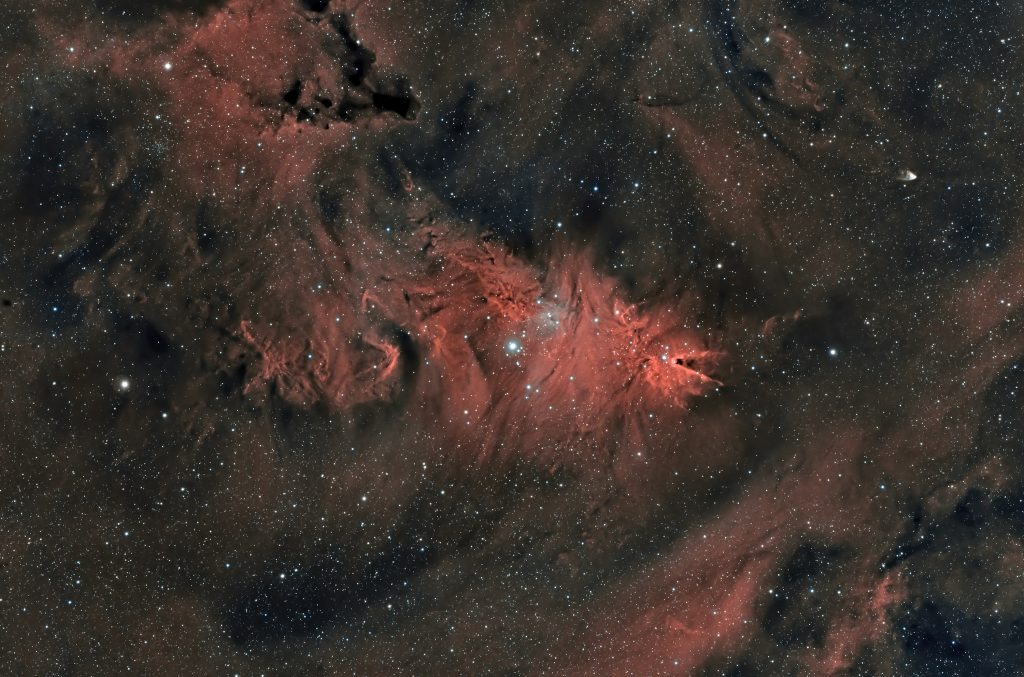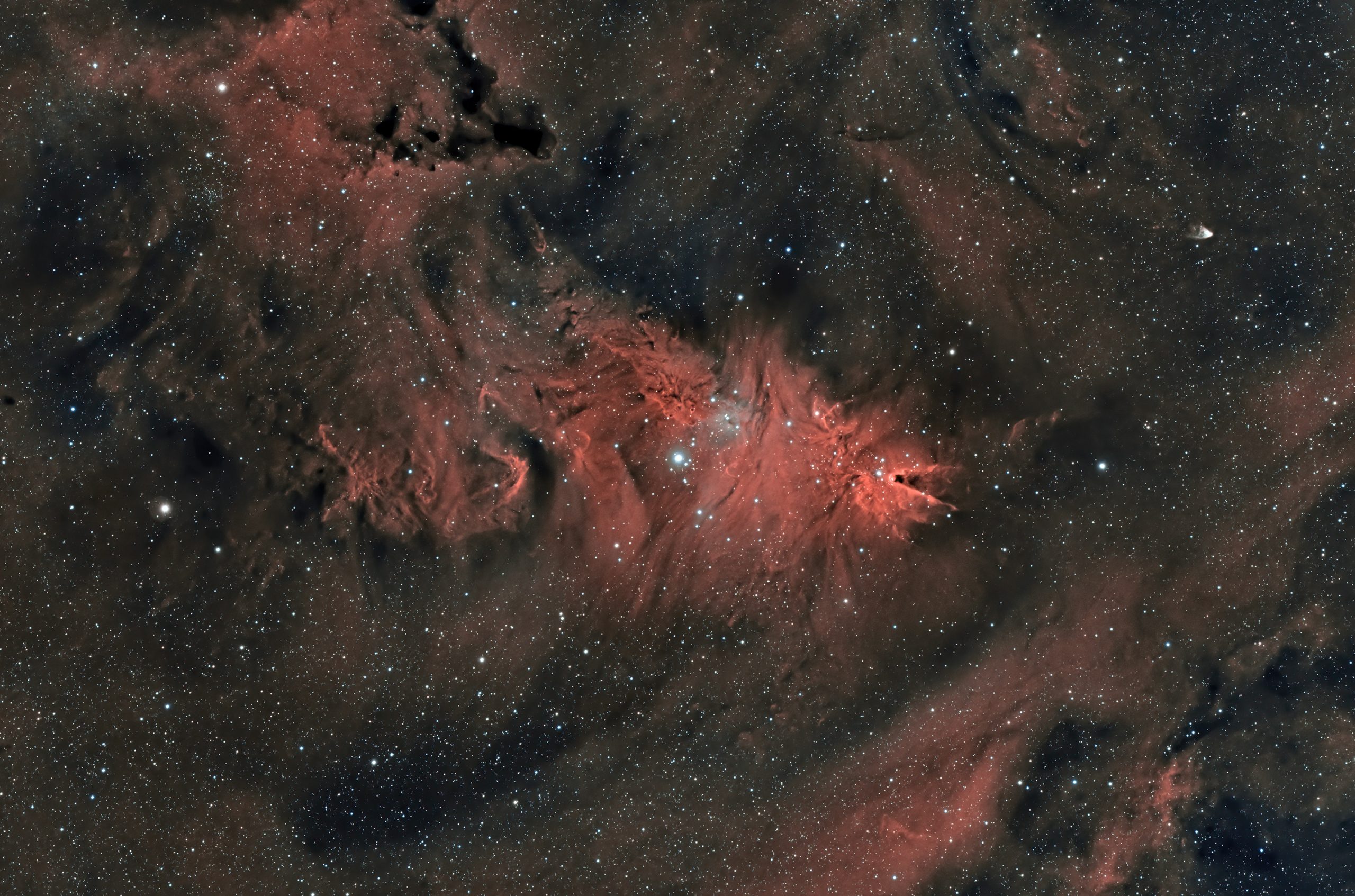It never ceases to amaze me what can now be done with a modern astro-imaging camera and a 3″ refractor! Also, it blows my mind that such faint details can be recorded during the full, or near-full Moon, and this is down to the use of narrowband filters.
This is an image of the NGC2264 region, also known as The Christmas Tree Cluster. There are several objects contained within this region such as The Cone Nebula and The Fox Fur Nebula and I think it’s clear which is which in this image. Additionally, there is a strange comet-like object in the upper-left quadrant which is called Hubble’s Variable Nebula. This is a fan-shaped cloud of gas and dust which is illuminated by the star R Monocerotis (R Mon), the bright star at the bottom end of the nebula. Dense condensations of dust near the star cast shadows out into the nebula, and as they move the illumination changes, giving rise to the variations first noted by Hubble.
This region of the sky is in the constellation called Monoceros (Unicorn in Greek) which is to the left of Orion.
As always, click on the image to see a bigger and better version about 6000 pixels across. I’ll add some details about how I took it below the image.

You can see the equipment I used to take this image here. Also, I talk about the narrowband filter I used here. I took about 100 exposures over two nights in January 2022, around the time of the full Moon. Each exposure was 10 minutes long. I used the amazing PixInsight software package to calibrate and assemble the images into the final result you see here.
